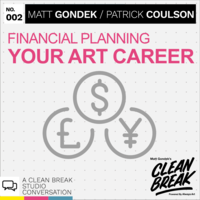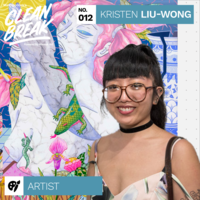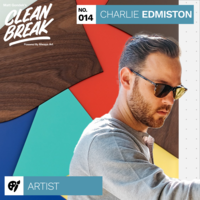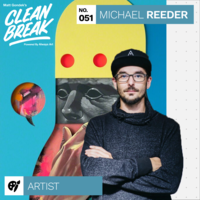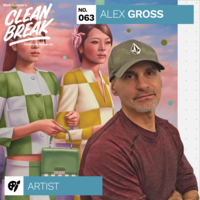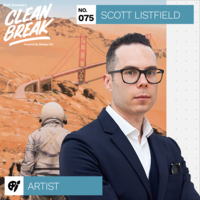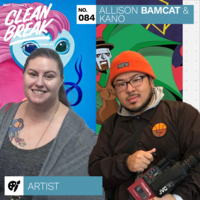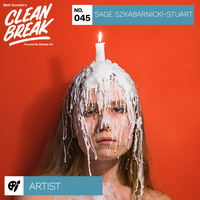Financial planning
for your art career
- by Always Art Staff


Financial planning is critical to launching your art career and having stability in your personal and professional life. With adequate financial planning, you can have more control over your art business, set professional and personal goals, and ensure longevity. When beginning your art career, there are factors to consider, for example: developing and improving your style and technique, finding your voice, setting up a studio, sourcing materials, selling your artwork, getting gallery representation, etc. Even without considering revenue and finances, the list is overwhelming.
It is true that everyone’s financial situation is different. Some individuals have predictable stable income from a full- or part-time job, while others have a fluctuating income from freelance projects, financial support from loved ones, or savings they prepared for their art journey. The list goes on, but no matter what situation you are in, diligent financial planning is critical.
Regardless of the financial position you are starting from, you need to be prepared. Being a professional artist is not an easy path; it can challenge many aspects of your life, including your finances. Following your passion typically leads to personal fulfillment (and hopefully the success) that make the risks worthwhile, but nonetheless, every artist needs financial stability to support their creative journey. Here are four steps you can take to improve your financial wellbeing as an artist.
1. Track your expenses and make a budget
The first step of successful financial management is having a clear picture of your expenses. Take your time and document everything, listing all your expenses and categorizing them by type. Doing this will give you visibility into everything you spend your money on and show you what you can trim versus what you need to survive in the immediate future and for the long-term. Here is how you can categorize your expenses:

- - Needs & fixed costs: Rent, utilities, phone bills, transportation, loan repayments, basic groceries, insurance, taxes.
- - Art related expenses: Materials, canvas, tools, studio space, etc.
- - Wants: Dining out, gym membership, travel, other shopping, etc.
Your needs should be covered, and your wants should be well managed in order to keep some money to put into savings. It is your ability to maintain savings that will create your financial security and freedom for the future, which will help you on your artistic journey.
Many people aim to follow the well-documented 50/30/20 budget method (income is divided into 50% for needs, 30% for wants, and 20% for savings). Unfortunately, this rule is not suitable for everyone. Especially for people with low income or those living in high-cost-of-living areas. More often than not, the needs portion takes up more than 50% of your total earnings.
You know your financial situation better than anyone else and you also know your money, career, and lifestyle goals. You should come up with a budgeting rule that suits you best, where you cover your expenses and do your best to save, even if it’s a minimal amount each month. If you have a fluctuating income, you should plan ahead for the upcoming months. Our advice to you is to keep your wants under control and to allocate some of that budget to events or opportunities that can contribute to the advancement of your art career. For instance, go to places where artists or art industry stakeholders are present, which will allow you to grow your network.
Identify your goals

You should know by now that your art career is your business. An art business should be treated like any other business, with strategy and planning at the core of your decision-making. It is essential to have a clear vision of your aspirations, and map out the paths and methods that can help you get there.
Short-term
Use your budget plan to support your realistic short- and mid-term goals, as it will dictate your daily activities and habits. Of course, making art should be among your top goals and priorities, since it is the key to your success.
Long-term
Your long-term goals should be aligned with your motivation and the answer to the question: “Why am I doing this?” These core values and motivating factors will help inspire you every day and keep you committed, even when projects are challenging or when you hit more difficult periods.

Having savings (or a nest egg) is critical for your long-term goals. The more you save, the more you are going to be able to achieve your career goals comfortably. You will carry less stress day to day which will allow you to work more freely, knowing that you have a safety net for any unplanned expenses. Your savings account will be your backup when you are a full-time artist.
Side hustle
This is an entire topic in itself, but we will touch on it briefly here. Some artists choose to prepare their savings to account prior to switching to becoming full-time artists. This strategy helps relieve financial stress and allows you to focus on creating art, improving your skills, and much more. Other artists try to balance starting their art career and having another job. Under this category, we also find artists who have full-time jobs and focus on art careers after work at night, which is typically regarded as a challenging path to follow.
There are contrasting opinions about the type of side job you should choose for when you want to focus on art. While some recommend having jobs unrelated to art to avoid draining your energy and creativity, others advocate for art-related jobs to help expand your knowledge about the industry and grow your network, while leaving you time to work as an artist. It is a matter of personal preference, so you can decide for yourself and see which option helps you grow more as an artist.
Support
Many organizations seek to support artists by offering a wide range of opportunities. The application specifications and eligibility requirements can vary across organizations in terms of the art style, medium, art project, artist’s citizenship, and other factors. With so many options available, you are likely to be able to find a suitable program for you. Keep in mind that the more popular programs and grants are very competitive, so be smart about your research and application strategy. For assistance in your search, there are many online platforms that list and update grants and other opportunities for artists, such as:
- Art Jobs
- NYFA
- Artlex
- Arts.gov

Be mindful of the time and effort needed to prepare applications. This is not an easy process, so you should choose programs where you meet the requirements and have a better chance of being selected. You must consider the tradeoff between the value of the opportunity and the time and energy it takes to complete the application. It is also important to learn how to handle rejection and keep a winning mindset, as it can take many application attempts across years for to finally get the opportunity you are seeking. check out





